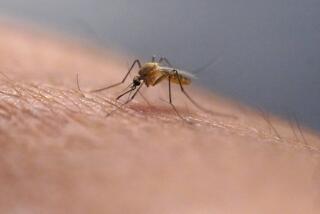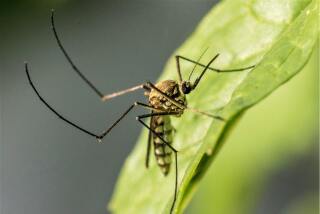1924 Plague in L.A. Traced to S.F., Orient
It was a summery day in late September, 1924.
In the bustling Latino neighborhood east of downtown Los Angeles, a small group of people were standing near a boarding house at 700 Clara St.
Some were discussing the various merits of Calvin Coolidge, John William Davis and Robert Marion LaFollette in the forthcoming presidential election. Others were gossiping about the upcoming Rose Bowl, to which Ernie Nevers was sure to take Stanford.
The rest were standing around listening to Jesus Lajun, who was recounting a humorous tale about his latest escapade: his discovery and disposal of a dead rat beneath the house.
That is how Dr. Robert S. Cleland describes the beginning of an extraordinary epidemic in Los Angeles: a 20th-Century outbreak of the bubonic plague.
Less than a month later, the gossip and laughter around the Clara Street boarding house had stopped, Cleland said in an article in Westways detailing the 1924 plague.
Lajun began to nurse a bloody cough and a painfully swollen groin, and he was mourning the death of his daughter, who had been declared a victim of sudden “double pneumonia” by the coroner only a couple weeks earlier. A neighbor, Lucena Samarano, had also died recently. By the end of October, Lajun was dead too. So were three other boarders. Within days, there had been 12 unexpected deaths in the neighborhood.
Once diagnosed as the plague, according to medical records of the period housed at USC, the community between Alameda Street and the Los Angeles River and from Macy Street to Alhambra Avenue was placed under strict quarantine. Rope barricades were set up, armed guards were brought in. Food was rationed, a temporary medical facility set up and undertakers throughout the city were instructed that in the case of any sudden death, bodies were not to be embalmed until health inspectors could examine them.
Because of the strict health measures, Los Angeles’ epidemic was quickly over, although before its end, 40 people were known to have been infected and all but three of them had died.
Medical historians now believe that the plague that infected Los Angeles came from San Francisco. It had apparently come aboard a ship that had entered San Francisco Bay from the Orient.
After lying dormant for most of the previous 200 years worldwide, the plague resurfaced in March, 1900, striking a Bay City wood seller who was staying in a hotel in San Francisco’s Chinatown, according to a 1955 article in the Stanford Medical Bulletin.
Although the city board of health placed a quarantine on Chinatown, according to Cleland, the quarantine was widely opposed by citizens throughout San Francisco. Nob Hill matrons were miffed that they were being deprived of their household help. Downtown businessmen feared that publicity about the quarantine could devastate trade. In headline after headline, the city’s newspapers lampooned the alarm as a result of the figment of doctors’ imaginations. Even the Chinese opposed the quarantine, saying it was a form of discrimination against them.
As a result of the opposition, the quarantine was ignored in San Francisco. It was not until the epidemic had spread across the state and Mexico had closed its ports to California shipping that San Francisco took the plague seriously--almost four years and 119 victims later.
More to Read
Sign up for Essential California
The most important California stories and recommendations in your inbox every morning.
You may occasionally receive promotional content from the Los Angeles Times.










